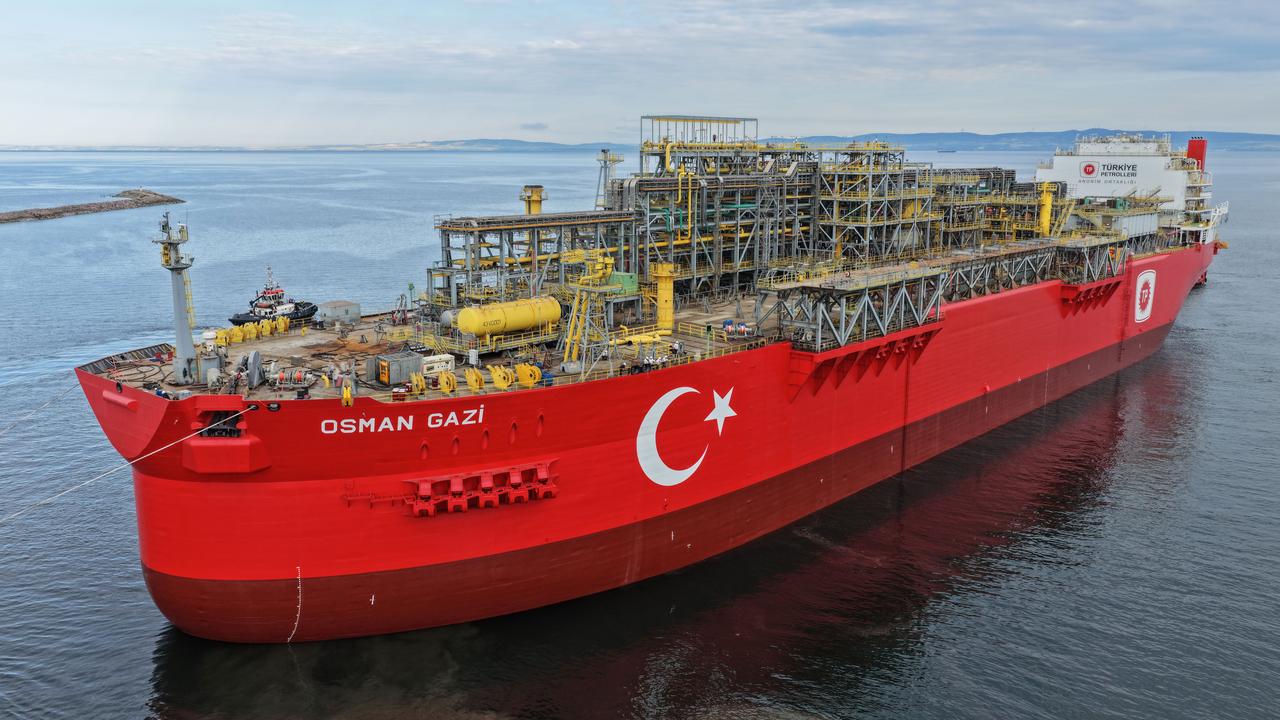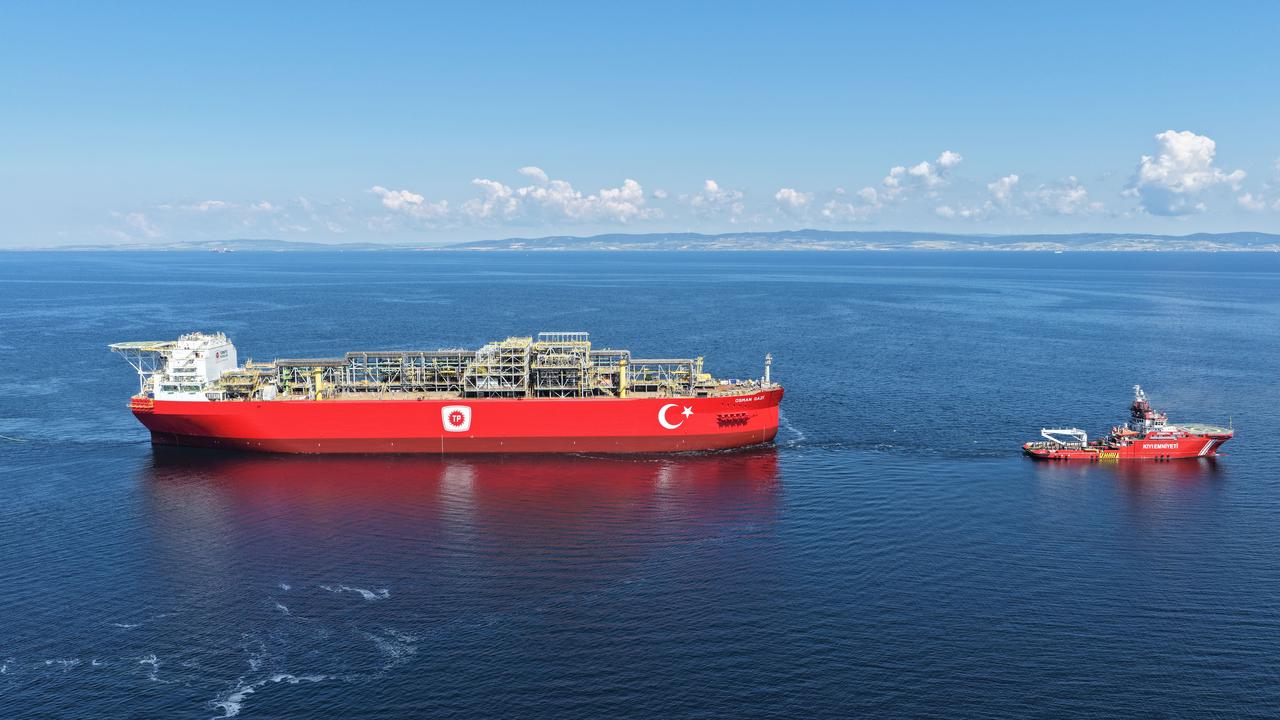Türkiye's first floating production platform, "Osman Gazi," will double the country's natural gas production in the Black Sea, according to the Ministry of Energy and Natural Resources.
The ministry announced the milestone through its X social media platform, stating, "New era name: Osman Gazi, Route: Black Sea, Target: Fully Independent Türkiye! Türkiye's first floating production platform, Osman Gazi, will double our natural gas production in the Black Sea."

The Osman Gazi floating production platform measures 298.5 meters (979.3 feet) in length, 56 meters in width, and 29.5 meters in depth. The facility has a total personnel capacity of 140 people.
The platform's maximum gas processing capacity reaches 10.5 million cubic meters, while its maximum gas transfer capacity stands at 10 million cubic meters. A 161-kilometer main gas transmission line will connect the platform to the shore.
Gas processed on the platform will reach land through this transmission line and be delivered to the national grid, ready for use.
The Osman Gazi Floating Production Platform was placed in dry dock at a Canakkale shipyard on Sept. 26, 2024, as part of renovation activities, where it remained for approximately eight months.
Having completed its shipyard operations, the platform is scheduled to pass through the Istanbul Bosphorus on May 29, coinciding with the anniversary of Istanbul's conquest.
President Recep Tayyip Erdogan and Energy and Natural Resources Minister Alparslan Bayraktar will see off the platform from Dolmabahce Palace as it heads to the Black Sea.
The Bosphorus crossing is expected to take approximately 11 hours. During the passage, tugboats affiliated with the Coast Guard General Directorate will escort the platform.

The platform is scheduled to dock at Filyos Port on June 1, 2025, marking the completion of its journey from the shipyard to its operational destination in the Black Sea.
This deployment represents a significant step in Türkiye's energy independence efforts, as the floating production platform will substantially increase domestic natural gas production capabilities in the region.